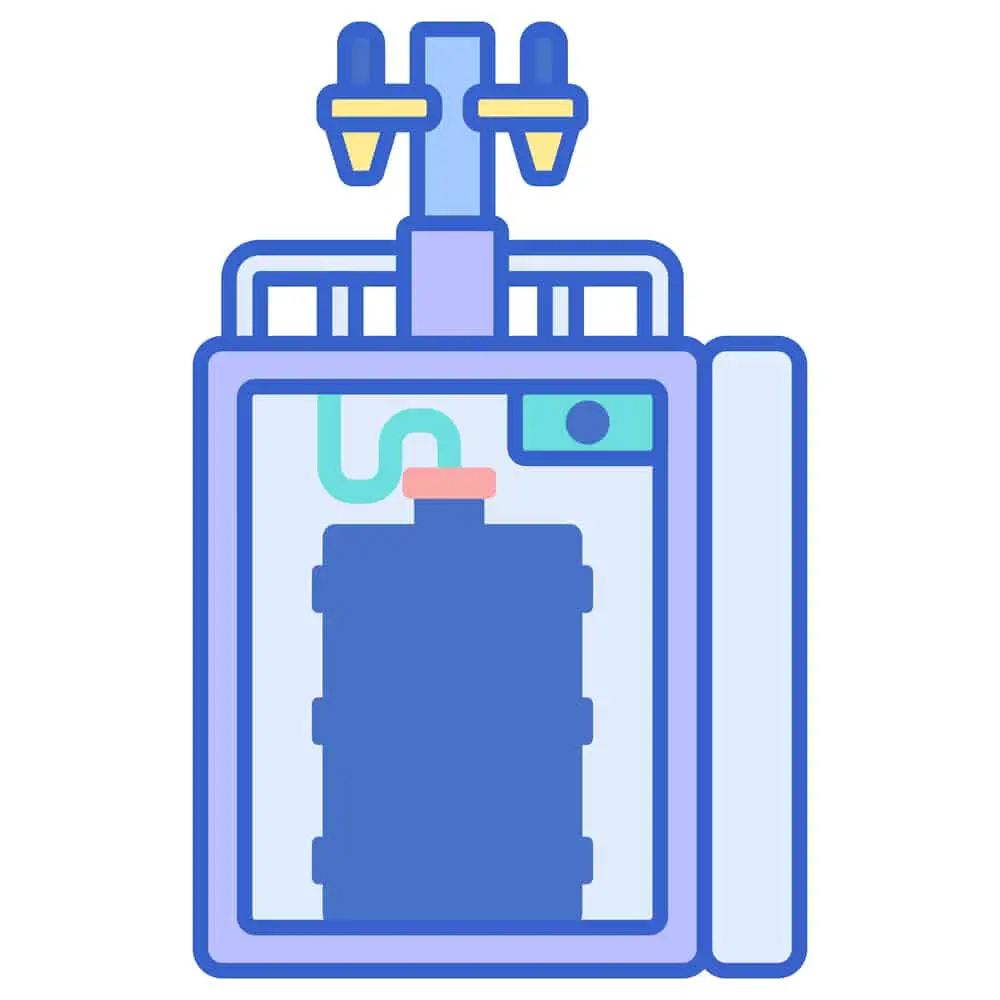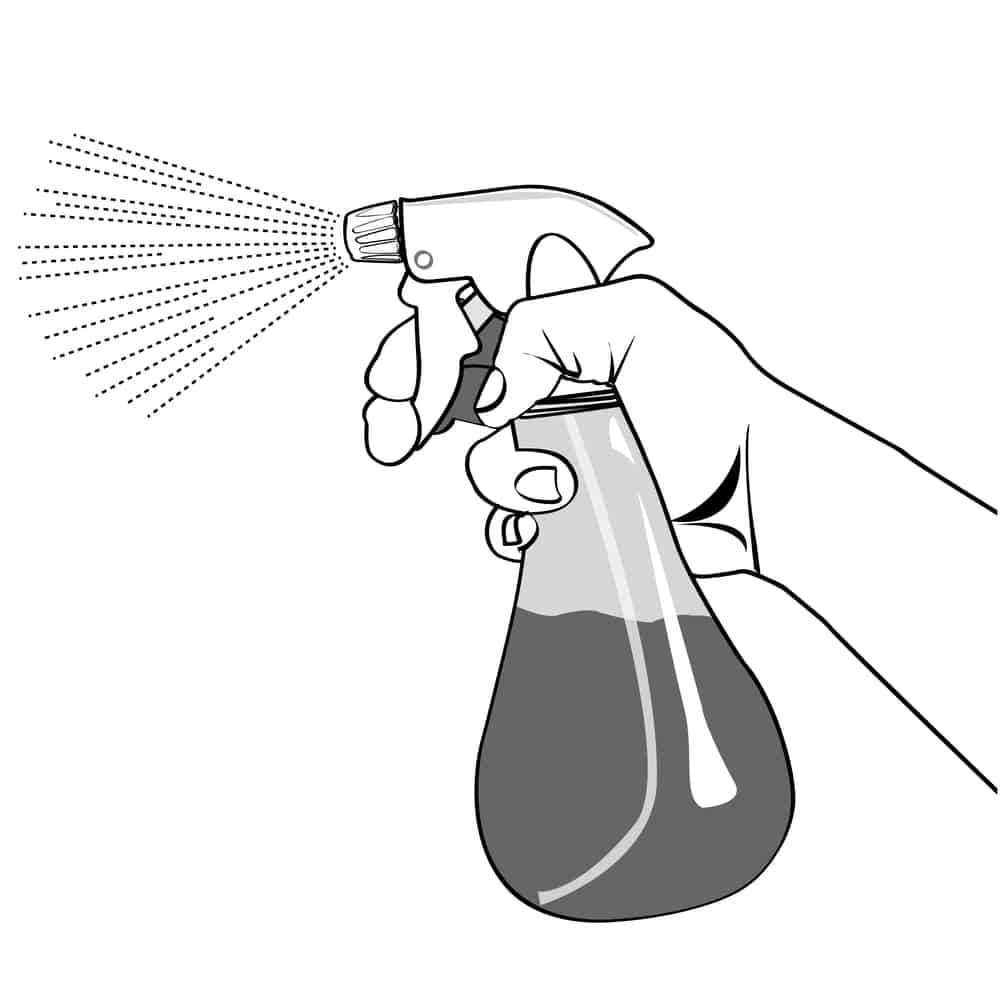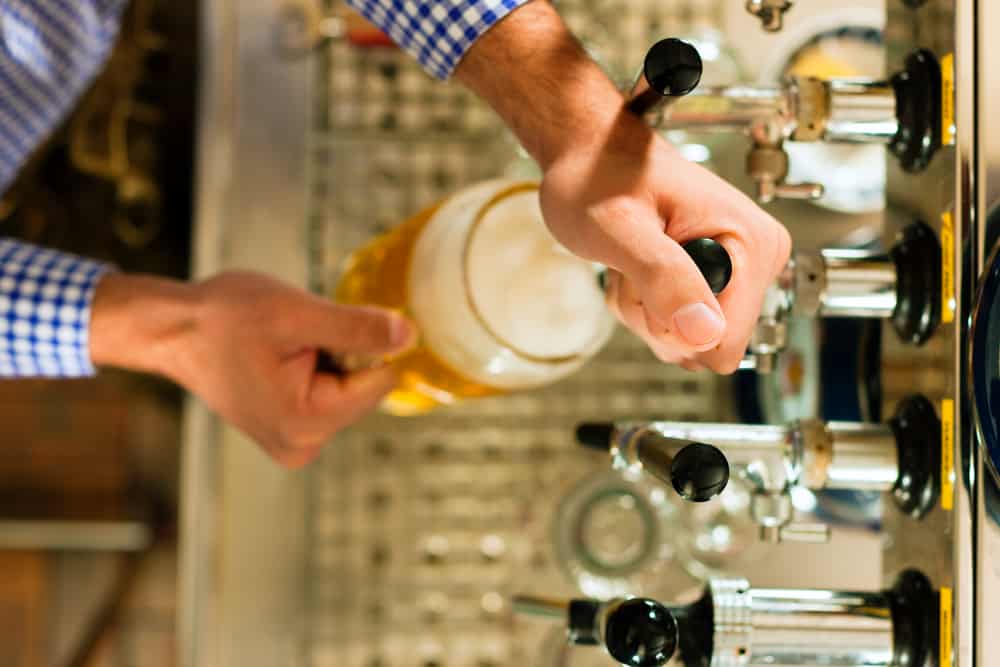Kegerators are small refrigerators specifically designed to hold and refrigerate kegs of beer for use in bars, breweries, and even at home. These kegerators use CO2 gas to carbonate beer which will propel beer against gravity to the top of a beer tap, out of which the beer then flows. A common question that homebrewers and bartenders have is whether or not they should turn off the CO2 on their kegerator when they’re not using it.
Kegerators have regulators with shut-off valves and safety measures to prevent CO2 from escaping while the tap isn’t in use. If you have already charged up your keg, it is OK if you want to turn off the gas to prevent over carbonating your beer.
There aren’t safety requirements one way or the other as to whether or not you should turn the CO2 off on your kegerator. However, just to be on the safe side, turning it off when the keg is disconnected or you’re not using it isn’t a bad idea. In this article, we’ll go into more detail about why this is a good idea and whether or not it’s ok to leave your CO2 on all the time.
Don’t Want to Read the Full Article? Here’s what I do:
If you want the quick and dirty answer, I turn my gas on and carbonate the beer for several days. After it is fully carbonated, I will turn the gas off. Every few days I will give it a charge of co2 by turning on the gas for a while and upping the pressure then turning it off. It is as simple as that. I have lost too much co2 due to leaky fittings. Perhaps I should get better at checking by reading my own article below.
Do you leave CO2 on all the time for a keg?

Technically speaking, there’s nothing wrong with leaving the CO2 on all the time for a keg. It will make sure that your beer is primed and ready to serve at any given moment. However, it also presents somewhat of a safety hazard to leave your CO2 on all the time. This is especially true if you have a leak in your tap and kegerator setup.
Leaks in a CO2 line can be minuscule and go unnoticed, depending on its size. Leaks commonly occur in the connection between the CO2 container and the kegerator, which is why many brewers recommend turning the supply off on your CO2 container when you’re not using it. If you intend to keep your CO2 on all the time, you should regularly check for leaks and make sure that your equipment is up to date.
Old valves, CO2 tanks, and kegerator connections are notorious for having microscopic leaks. Leaks aren’t a big deal if you leave your CO2 turned off. However, if you leave it open full-force all the time, you’re likely to run out of CO2 much faster than you anticipated.
As CO2 has increased in price just like everything else lately, a slow leak can cost you a $20 dollar fill at your local refill station.
Another good idea for serving beer from a kegerator using CO2 gas is to turn the CO2 supply on at least five days before you plan to serve beer. Allowing the CO2 to mix with the beer for five days will provide enough time for the two to blend perfectly. While this isn’t mandatory, it’s best practice if you want to serve the best brew.
What Does CO2 do for a Kegerator?
A CO2 is one of the most important components to the operation of a kegerator. The kegerator itself keeps a keg of beer cold until the tap above it is opened and allows beer to flow out of it. However, because the beer is being stored below the tap, there has to be something that creates pressure which causes the beer to rise up against the force of gravity.
That’s where CO2 comes in. It acts as a force of air that pushes beer against gravity through a tube that connects the tap to the keg. CO2 also mixes with the beer that it’s propelling upward and makes it more fizzy and carbonated than it would otherwise be.
Reasons to Leave CO2 on All the Time
CO2 does more than just create pressure that forces beer upward to the tap when it’s called upon. If this was all that CO2 did, there would be no reason to leave it turned on when you weren’t using your kegerator. Here are some of the other reasons that people leave their CO2 turned on all the time.
- CO2 gives beer a refreshing and carbonated taste.
- Without CO2, beer would be flatter when you served it and not as flavorful.
- CO2 also creates bubbles and foam that help to keep the beer the appropriate temperature when you serve it.
- When tapping a fresh keg, it’s important to integrate CO2 for several hours and even days before you start serving it to keep it from tasting flat.
Reasons to Turn CO2 Off When Not Using It
While CO2 plays a vital role with your keg and kegerator, there are many who believe it’s better to turn it off when not using it. CO2 is fairly expensive to use, and losing it due to a leak or similar reason could prove costly.
- The main reason that people turn their CO2 off is because they’re worried about a slow leak forming. CO2 creates extremely high amounts of pressure and older tanks with old components are vulnerable to springing a leak.
- There’s also the danger of over carbonating beer by leaving your CO2 turned on all the time. CO2 is supposed to be regulated when it’s being added, but if there are issues with the regulator it will leak in uncontrollably.
- Once your beer is sufficiently carbonated, there’s really no need to leave the CO2 turned on all the time.
Can I keep my CO2 tank in the kegerator?
Another common question that brewers have is whether or not they can store their CO2 tank inside their kegerator next to the keg. Unfortunately, not all kegerators are large enough to accommodate both the keg and the tank, which means most people don’t even have the option. However, if you do, there’s nothing wrong with storing your CO2 tank inside your kegerator.
In fact, storing your CO2 tank inside your kegerator may even enhance the quality of your brew. CO2 is an extremely high-pressure gas with a temperature of between -57 and -78 degrees Farhenheit. Storing your CO2 in warm places can trigger it to release prematurely, resulting in leaks or damage to your CO2 or storage tank.
The last thing you want is extreme heat to cause the valve on your CO2 tank to explode, which is also a possibility in extreme heat. Whether or not you store your CO2 tank inside or outside your kegerator isn’t as important as making sure that the tank isn’t stored in a hot or warm area where damage to the tank is possible.
Should you turn beer gas off?
Turning your beer gas, also known as nitrogen or CO2, off when you aren’t using it isn’t a requirement. However, it’s much safer to turn it off when not in use in case to ensure that a leak cannot occur in the connection between the CO2 tank and the kegerator. However, if you regularly check for leaks and ensure that your equipment is in tip-top shape, there’s nothing wrong with leaving your beer gas turned on. Here’s how to check for leaks.
The Soapy Bubble Test

The soapy bubble test is the quickest, easiest, cheapest, and best way to check for leaks in your kegerator. CO2 is stored at extremely high pressures, and there are many different spots that CO2 leaks can originate on your kegerator. However, the soapy bubble test is a relatively foolproof method that can check every single one of them. Here’s how it works.
- Fill an empty spray bottle with water and a small dash of dishwashing soap and shake it thoroughly.
- Go to each possible leak point on your kegerator system and thoroughly spray each part. Ensure to spray the top, bottom, and sides of the possible leak point to be as thorough as possible.
- If CO2 is leaking out anywhere, the high pressure of the air will cause the soapy water to bubble and foam. The worse the leak is, the more bubbly and foamy the water will be.
Places to Check for Possible Leaks on a Kegerator
- Hose to barb fittings where a clamp is used to tighten the connection. Overtightening or under-tightening the clamp can cause a leak.
- Regulator hose barb shut-off valve fitting.
- Regulator nut where the CO2 tank and the kegerator come together.
- The CO2 safety valve on the tank itself.
- CO2 pressure gauge or the top handle on the CO2 tank that opens and closes the flow of CO2 within the tank.
- The coupler and shank gaskets on a kegerator.
- There are a number of points to watch specifically with homebrewing kegs, including the lid, top seal, keg posts, poppets, and dip tube seals.
- Quick disconnect seals are common culprits, especially if you clean your kegerator with commercial cleaners.
- Faucet seals, keg coupler seals, and any other seals or connection points between the kegerator, the tap, or the CO2 tank.
We use a food grade grease on all o rings and connection points. Here is what we use: (Amazon Link)
Do you turn on CO2 before tapping keg?
When tapping a keg, the proper order of events is to tap the keg BEFORE turning on the CO2 supply. It’s not good to let CO2 flow into your keg before it’s tapped. However, you want to make sure that your pressure regulator on the CO2 tank is pressurized before opening the flow of CO2 gas into the keg. Opening the regulator before it’s pressurized could result in beer flowing backward from the keg into the CO2 tank.
How do You Turn Off CO2?
One of the reasons many people choose to turn off the CO2 supply to their kegerators is because of how easy it is. Turning your tank off doesn’t take much time or effort and is an easy way to ensure that a leak doesn’t occur between your CO2 tank and your kegerator. Here’s how to turn off your CO2 supply.
- Your CO2 tank is equipped with an ON/OFF valve on the top of the tank to make for easy regulation.
- Turn the valve on top of the tank in the clockwise position to close it. Continue to turn until the handle feels tight and refuses to turn further.
Turning the CO2 supply on and off on your kegerator is as easy as opening or closing a water faucet.
